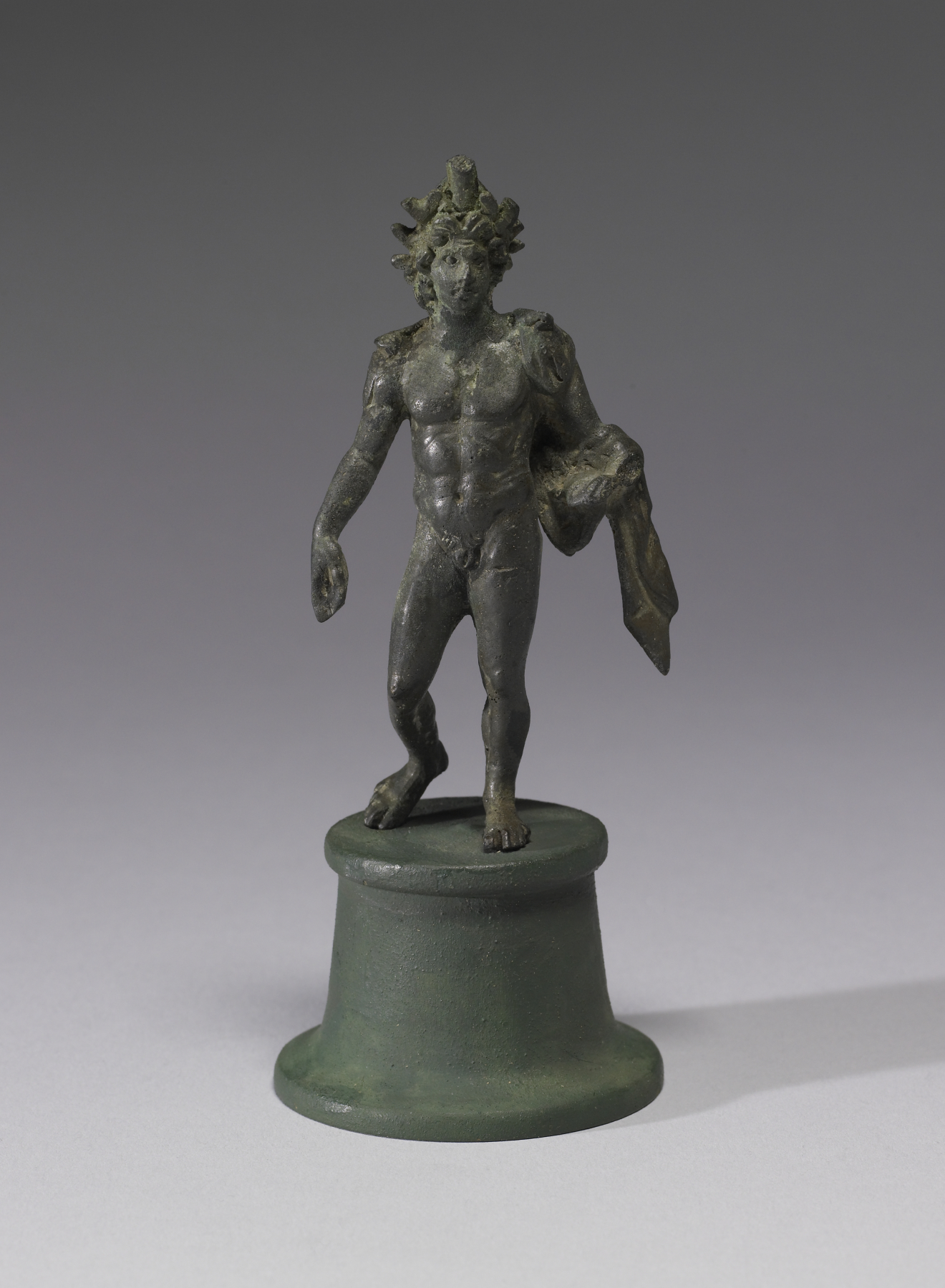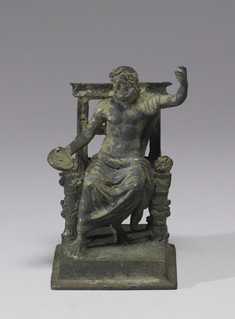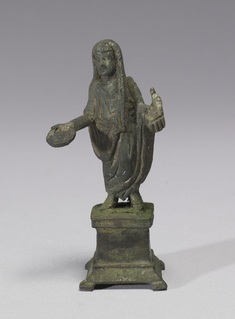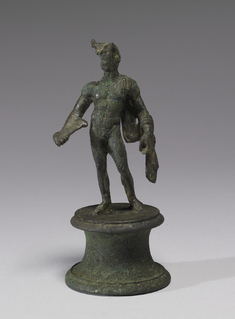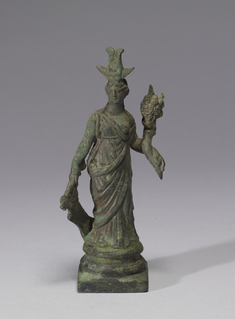Alexander Helios
(Roman Empire )
Each Roman household had a "lararium," or household shrine, in which small bronze figurines of deities, including "lares" (the divinities protecting the house) were displayed. The master of the house would make daily offerings at the shrine, as well as more ceremonial offerings on important occasions.
This small figurine was found together with six others (Walters 54.747-54.752) in a "lararium" at Boscoreale, the site of a Roman villa near Pompeii. A "Genius" (or priest) stood before the household deities, Isis-Fortuna, Mercury, a seated Jupiter, Alexander Helios, and a standing Jupiter. These were divinities the family particularly venerated for the continuing good fortune of the household.
Provenance
Provenance (from the French provenir, 'to come from/forth') is the chronology of the ownership, custody, or location of a historical object. Learn more about provenance at the Walters.
Excavated by Ferruccio de Prisco, 1903, at the Villa del Fondo Acunzo, Boscoreale; C & E. Canessa, New York, Paris, and Naples, by 1906, [mode of acquisition unknown]; Henry Walters, Baltimore, 1906, by purchase; Sadie Jones (Mrs. Henry Walters), New York, 1931, by inheritance; Sale, Joseph Brummer, New York, 1943; Walters Art Museum, 1943, by purchase.
Exhibitions
| 2008-2009 | Pompeii and The Roman Villa. National Gallery of Art, Washington; Los Angeles County Museum of Art, Los Angeles. |
Conservation
| Date | Description | Narrative |
|---|---|---|
| 5/4/1982 | Examination | examined for condition |
Measurements
3 9/16 in. (9.1 cm)
Credit Line
Museum purchase [formerly part of the Walters Collection], 1943
Location in Museum
Accession Number
In libraries, galleries, museums, and archives, an accession number is a unique identifier assigned to each object in the collection.
In libraries, galleries, museums, and archives, an accession number is a unique identifier assigned to each object in the collection.
54.2290

